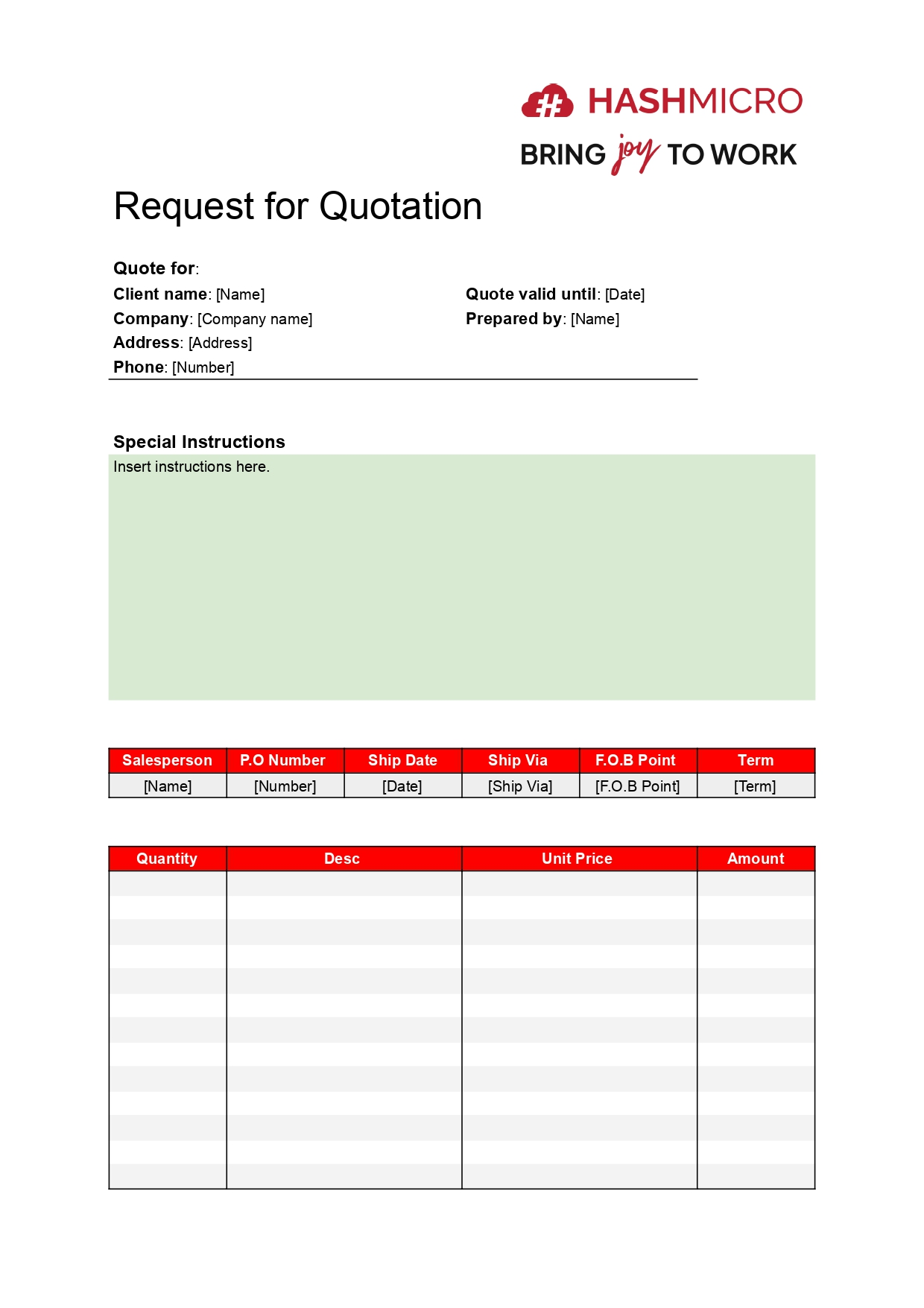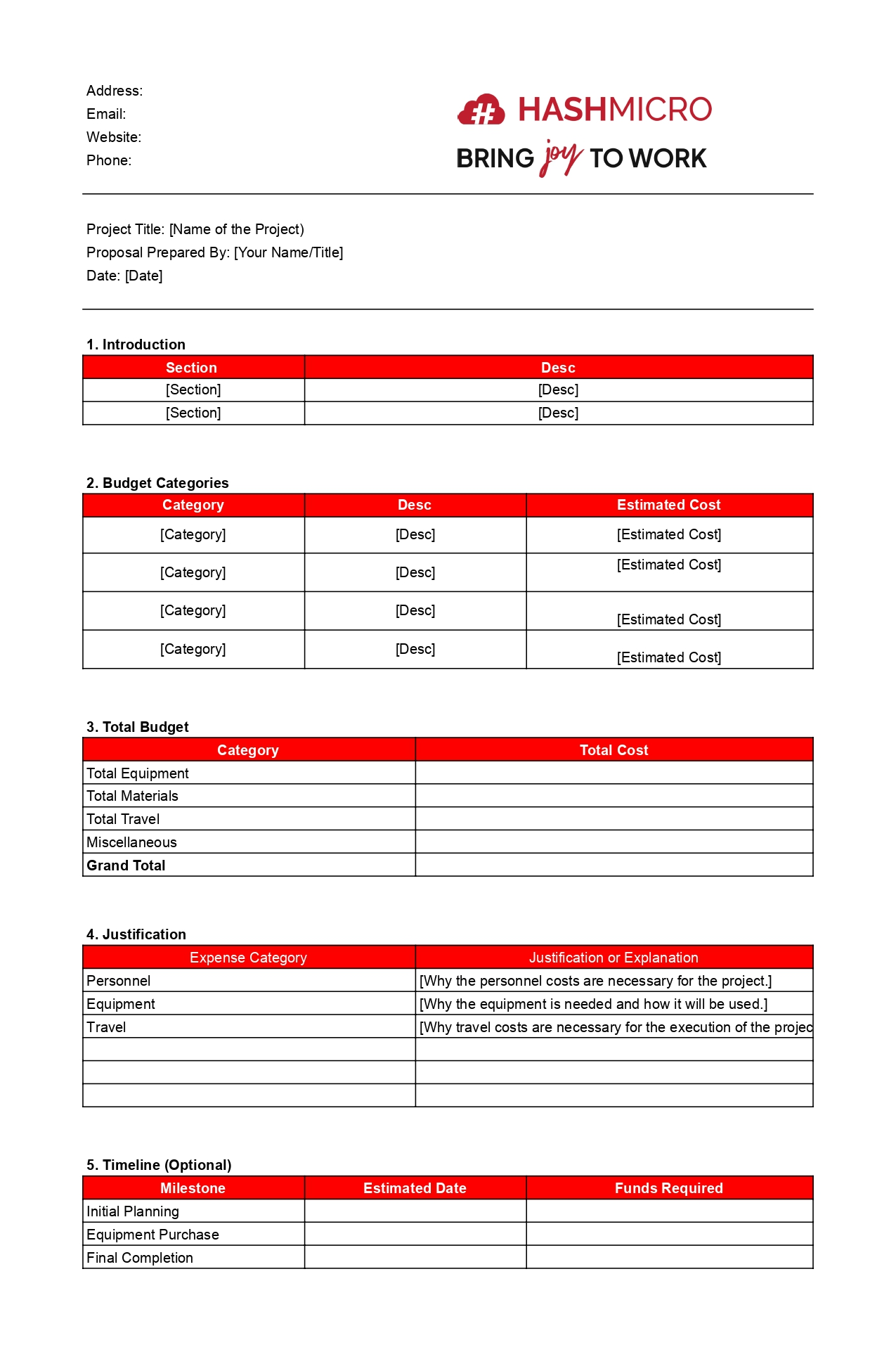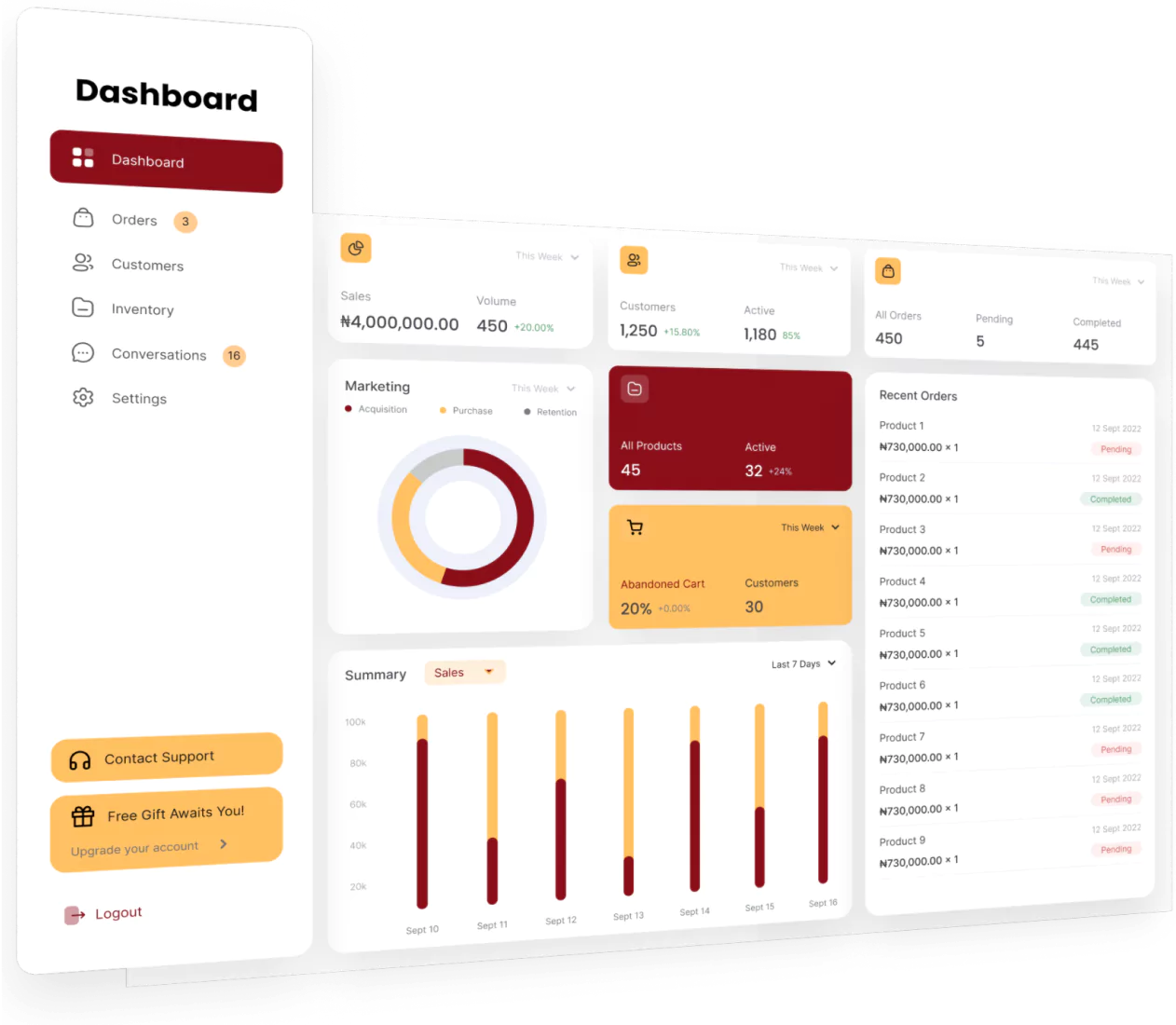Procurement often feels complicated, especially when faced with too many supplier options and no clear way to compare them. Without the right tools, decision-makers can feel overwhelmed and make costly mistakes.
An RFQ (Request for Quotation) template helps structure this process. It standardizes how you communicate with vendors and ensures you collect accurate, valuable data to evaluate them fairly. This simple yet powerful tool can speed up decision making and improve procurement outcomes.
With HashMicro procurement system, you get more than just a template, you get full automation, efficiency, and control over your sourcing process. Mas mapapadali ang trabaho at makakatipid ka pa kaya ano pang hinihintay mo? Gamitin na ang HashMicro!

What is an RFQ Template?
An RFQ (Request for Quotation) template is a standardized document that helps businesses gather detailed pricing, product specifications, delivery timelines, and service terms from multiple vendors.
By using a consistent format, companies can ensure that all suppliers respond to the same set of requirements making comparisons more accurate and fair.
Having an RFQ template in place is essential for streamlining the procurement process. It not only saves time but also minimizes miscommunication and reduces the risk of selecting the wrong vendor.
With clear, organized information, decision-makers can confidently evaluate offers and choose the most suitable supplier based on data, not guesswork.
The Importance of Using an RFQ Template in Business
An RFQ (Request for Quotation) template is a valuable resource for project managers, offering a structured and efficient way to engage with suppliers and vendors. It streamlines the procurement software, particularly when multiple quotations are needed across different phases of a project.
Beyond saving time, the RFQ template is key in enhancing cost transparency and strengthening negotiation power. By clearly outlining project requirements and cost expectations, project managers can evaluate pricing more effectively and negotiate more confidently. Here are several reasons why using RFQs is essential:
- Time efficiency: With a ready to use format, reaching out to multiple suppliers becomes faster and more organized
- Stronger negotiation leverage: Transparent cost expectations allow more informed and strategic discussions with vendors.
- Competitive pricing: Suppliers are more likely to offer their best rates when they know they’re part of a competitive process.
- Clear cost breakdowns: Providing vendors with detailed requirements results in more accurate and realistic pricing.
- Better cost control: Managing the bidding process through RFQs helps ensure that every proposal is aligned with your budget, whether you’re running an open or sealed bid.
When Is It Best to Use an RFQ Template?
An RFQ template is helpful when sourcing goods or services such as raw materials, from potential vendors. It allows you to request pricing from multiple suppliers, compare offers, and choose the best fit before issuing a purchase order.
Typically used during the project planning stage, the RFQ supports budget planning and vendor selection. It ensures you’re partnering with the right supplier based on pricing, reliability, and capability.
As part of the vendor communication process, the RFQ complements other documents like the RFI and RFP, helping ensure timely delivery and cost efficiency.
Who Should Use the RFQ Template?
The responsibility for using an RFQ varies depending on the organization’s structure and the scale of the project. In smaller teams, the project manager or their assistant, who typically manages administrative tasks, often prepares and sends the RFQ.
In larger companies, this role usually falls under a dedicated procurement manager. They oversee supplier relationships, manage sourcing activities, and ensure all agreements align with the project’s objectives.
Using an RFQ template helps create a transparent, consistent process saving time and ensuring all essential information is ready when it reaches the person authorized to finalize contracts.
RFQ Template Examples
We’ve compiled a few examples of RFQ templates to help you get started with a more efficient and organized procurement process. These samples can be a practical reference for creating clear, consistent requests tailored to your business needs.
1. Simple RFQ template

Simple RFQ template
This Request for Quotation (RFQ) template helps present a structured and detailed quote for a client’s project. It features sections for company and client information, validity period, and the name of the person preparing the quote.
An organized table is included to outline each product or service along with quantity, description, unit cost, and total price. At the bottom, the template summarizes the subtotal, taxes, any extra charges, and the final amount payable.
2. Simple budget proposal template

Simple budget proposal template
The Simple Budget Proposal Template is designed to provide a clear, concise financial overview for a project. It includes key sections such as the Introduction, which outlines the project’s goals and scope, helping to set the context for the proposed budget.
The Budget Categories section breaks down the projected costs into categories like Personnel, Equipment, Materials & Supplies, Travel, and Miscellaneous, along with their estimated costs, providing a detailed view of how funds will be allocated.

Streamline RFQ Template Creation with HashMicro’s Procurement Solution

Handling RFQs manually is often messy and inefficient. Each department may be using its own version of the template; important information gets lost in endless email chains, and when it comes time to review bids, you’re stuck sifting through misaligned spreadsheets.
Now, imagine you have one organized platform where all your RFQ activities are stored and accessible. No more rummaging through inboxes or struggling with inconsistent formats, just a streamlined process in one easy-to-use system.
HashMicro Procurement Management System, integrated with ERP software, simplifies and unifies RFQ management by offering a centralized solution tailored to your workflow. The system ensures that every RFQ sent follows a consistent and professional format, resulting in smoother cross-departmental collaboration and more efficient communication with vendors.
HashMicro provides various features to help with more than just managing RFQ templates:
- Purchase Cycle Management (PO, RFQ & PR): With just a few steps, easily create purchase requests and convert them into purchase orders. Send RFQs to multiple suppliers simultaneously to speed up the quotation process and improve vendor selection.
- Purchase Request Approval: With a single click, approve or reject requests from different teams, branches, or staff. This helps prevent unapproved spending and keeps procurement aligned with company policies.
- Vendor Portal: Vendors can upload product catalogs directly through the online portal, making it easier to manage tenders and compare offers in one place.
- Vendor Performance Evaluation: Rate suppliers based on key criteria like product quality, delivery speed, pricing, and service reliability, which will help you maintain high procurement standards.
- Blanket Order Automation: Automate recurring purchases using pre-negotiated pricing and delivery schedules to simplify long-term procurement agreements and improve operational efficiency.
Conclusion
An RFQ template is a valuable tool that helps simplify and speed up the procurement process. It allows you to request and compare supplier bids efficiently, keeping your spending on track.
Managing RFQs manually can be tedious, but HashMicro’s Procurement Software changes that. It centralizes your RFQ process, standardizes templates, and organizes supplier communication for easier, more efficient management.
Beyond simplifying RFQs, HashMicro helps you take control of the entire procurement cycle. From vendor coordination to budget oversight and approvals, everything becomes more streamlined and accurate.
Ready to leave behind the inefficiencies? Explore a smarter way to manage procurement with HashMicro. Try the free demo today.

FAQ RFQ
-
What is the timeline for the RFQ?
RFQ timelines are essential for structuring and efficiently managing the procurement process. They allow both suppliers and buyers to align their expectations and deliverables effectively. Knowing the important parts of an RFQ timeline is essential to the project process.
-
How to check RFQ?
Navigate to the RFQ response page. A listing of the responses that are generated for a specific RFQ request displays. Specify the status of the responses you are searching for in the View field. The status of each response is indicated in the Status column.
-
What is RFQ protocol?
A Request for Quote (RFQ) is a way for traders to get electronic quotes on multi-leg options strategies. It is an electronic message that is sent to all CME Globex market participants that are expressing interest in a strategy or instrument.





























